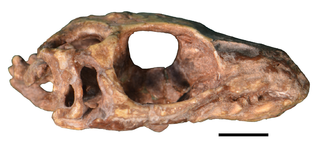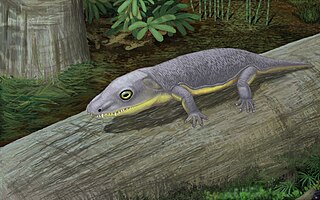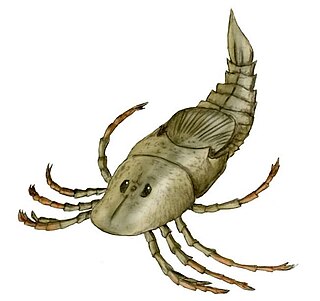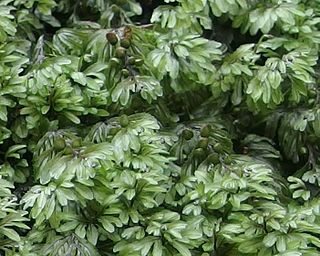Related Research Articles
Griphognathus and Greek: γνάθος gnáthos 'jaw') is an extinct genus of lungfish from the late Devonian period of Europe and Australia.

This is a list of taxa comprising the flora of the Antipodes Islands. It includes some species known as megaherbs.

Ozothamnus is a genus of plants found in Australia, New Zealand and New Caledonia.

Phebalium whitei is a small shrub that is endemic to south-east Queensland. It has branchlets covered with silvery and rust-coloured scales, leathery, oblong to elliptic leaves and bright yellow flowers arranged in sessile umbels on the ends of branchlets.

Paliguana is an extinct genus of lizard-like lepidosauromorph reptile from the Late Permian or Early Triassic Katberg Formation in the upper Lystrosaurus Assemblage Zone of South Africa.

Phonerpeton is an extinct genus of dissorophoid temnospondyl within the family Trematopidae that is known from the early Permian of Texas.
This is a list of the flora of the Tubuai, an island in French Polynesia.

Dinochelys is an extinct genus of paracryptodiran turtle from the Late Jurassic Morrison Formation.

Mycteroptidae are a family of eurypterids, a group of extinct chelicerate arthropods commonly known as "sea scorpions". The family is one of three families contained in the superfamily Mycteropoidea, which in turn is one of four superfamilies classified as part of the suborder Stylonurina.

Hymenophyllum australe, commonly known as austral filmy fern, is a relatively large rupestral and epiphytic fern, indigenous to eastern Australia and New Zealand. It belongs to the unique Hymenophyllum genus, which are characterised by their thin membranous fronds that are seldom more than one cell thick, with the exception of regions over and around veins. Hymenophyllum australe is distinctive in that the fronds are typically thicker than other Hymenophyllum species, often being up to 2-3 cells thick.

Hymenophyllum wilsonii, the Wilson's filmy-fern, is a small, fragile, perennial leptosporangiate fern which forms large dense colonies from creeping rhizomes.

Hymenophyllum tunbrigense, the Tunbridge filmy fern or Tunbridge filmy-fern, is a small, fragile perennial leptosporangiate fern which forms large dense colonies of overlapping leaves from creeping rhizomes. The common name derives from the leaves which are very thin, only a single cell thick, and translucent, giving the appearance of a wet film. The evergreen fronds are bipinnatifid, deeply and irregularly dissected, about 3 to 6 cm long, 2 cm across with dark winged stipes. In contrast to the similar H. wilsonii the fronds are more divided, flattened, appressed to the substrate and tend to have a bluish tint.
Sweetognathidae is an extinct family of conodonts in the order Ozarkodinida.
Sweetognathus is an extinct genus of conodonts in the family Sweetognathidae that evolved at the beginning of the Permain period, in near-equatorial, shallow-water seas.
Mesogondolella is an extinct genus of conodonts.